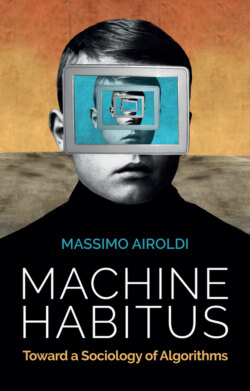Читать книгу Machine Habitus - Massimo Airoldi - Страница 11
Analogue Era (–1945)
ОглавлениеTaking analogue to mean ‘not-digital’ (Sterne 2016), this first historical phase ranges in principle from the invention and manual application of algorithms by ancient mathematicians to the realization of the first digital computers right after the Second World War. Within this period, algorithms were applied either by human-supervised mechanical devices or by humans themselves (Pasquinelli 2017). In fact, up until the early twentieth century, the word ‘computer’ indicated a person employed to make calculations by hand. Mechanical computers started to be conceptualized at the beginning of the nineteenth century, following Leibniz’s early intuitions about the mechanization of calculus (Chabert 1999), as well as a rising demand for faster and more reliable calculations from companies and governments (Wilson 2018; Campbell-Kelly et al. 2013). Aiming to automatize the compilation of tables for navigation at sea, particularly strategic for the British Empire, in the 1820s the mathematician Charles Babbage designed the first mechanical computer, the Difference Engine, which was then followed by the more ambitious Analytical Engine – ideally capable of performing ‘any calculation that a human could specify for it’ (Campbell-Kelly et al. 2013: 8). Babbage’s proto-computers were pioneering scientific projects that remained largely on paper, but more concrete applications of simpler electro-mechanical ‘algorithm machines’ (Gillespie 2014) came to light by the end of the century. In 1890, Hollerith’s electric tabulating system was successfully employed to process US census data, paving the way for the foundation of IBM. Thanks to the punched-card machines designed by Hollerith, information on over 62 million American citizens was processed within ‘only’ two and a half years, compared with the seven years taken by the previous census, with an estimated saving of 5 million dollars (Campbell-Kelly et al. 2013: 17–18). The mass production of desk calculators and business accounting machines brought algorithms closer to ordinary people’s everyday routines. Still, information was computationally transformed and elaborated solely through analogue means (e.g. punched cards, paper tapes) and under human supervision.
